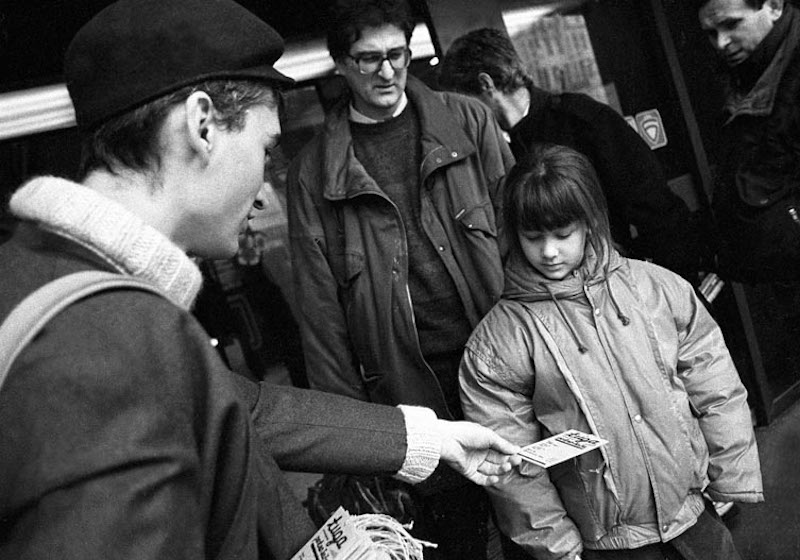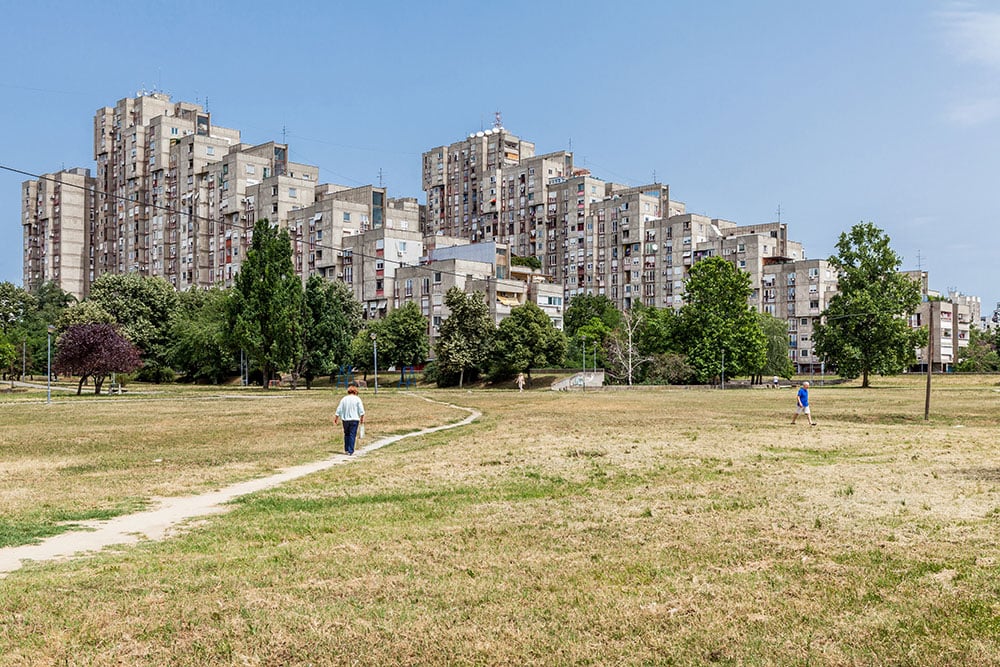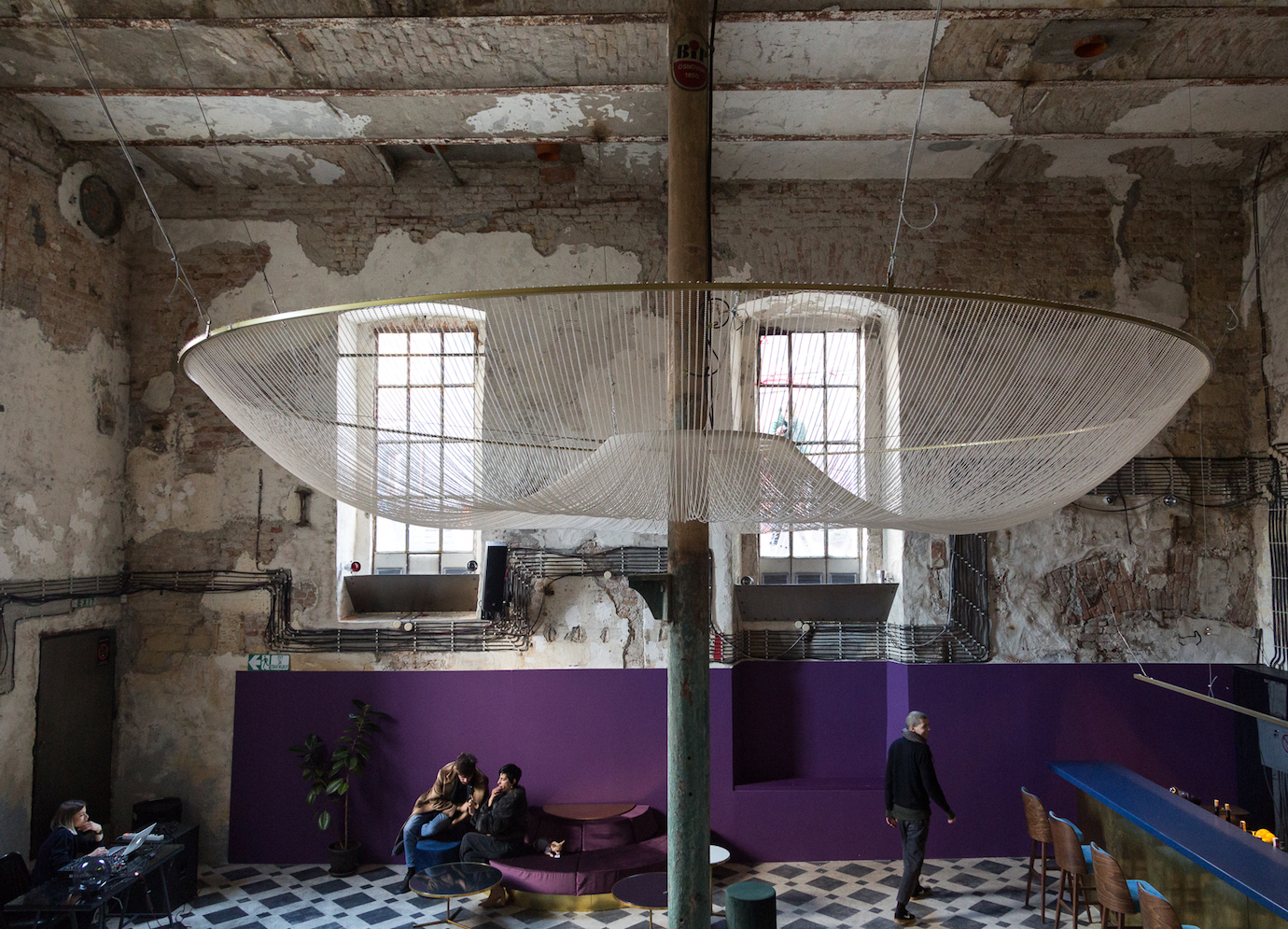The evolution of ŠKART, the Serbian art collective forging communities through war and peace

From its meagre beginnings in a Belgrade workshop in a city on the outbreak of war, ŠKART has spent 30 years using creativity to unite people — usually outside the established art institutions that many artists would rely on. Seda Yıldız tracks their story across three turbulent decades of Serbian history.
ŠKART set down its roots as Yugoslavia descended into civil war. The art collective first came to life in an abandoned print workshop in 1990, when two students at the Faculty of Architecture in Belgrade — Dragan Protić and Dorde Balmazović, known respectively as Prota and Žole — tried to make their own graphic prints. They often failed — but together, they began to appreciate the beauty in their failed mistakes more than their creative triumphs. They started to think about the things overlooked, less visible, or outside of social norms. The duo decided to name themselves ŠKART, meaning “scrap”, “despised”, or “left over” in Serbian. The name sums up much of what the group has done over the last three decades: using minimal resources to reach out to the vulnerable and marginalised on the very edge of Serbian society.
Initially, much of this outlook was moulded by the Yugoslav Wars. As communism collapsed and conflict began to churn, traditional art institutions and funding sources — already thin on the ground — began to disappear for good. ŠKART were forced out into the city and towards the public by sheer necessity, relying on intuitive self-produced projects and street actions. During the winter of 1992-93, ŠKART distributed poems to passers-by in Belgrade as part of The Sadness Project, a public declaration of personal sadness. “Everything around us was falling apart and we reacted to that with poetry; we tried to make our message legible,” says Žole.
“All these separated countries, divisions of nationality and ethnicity, are very retrograde — We wanted to form an open, unframed form of collaboration. Resistance requires diversity”
In another symbolic gesture in 1995, Kuponi, the group printed and handed out small coupons. It gave the owner a chance to redeem the pamphlet for items such as a “revolution”, “tolerance”, or an orgasm, ideas that would encourage people to reflect during times of upheaval. “Friends of ours started to collect money among themselves to support our projects; it was beautiful because during wartime we experienced a very difficult financial situation,” says Žole. “Yet they thought we must continue, this was the way we somehow keep fighting through self-produced works”.
Such performances might have seemed as tongue-in-cheek, but for ŠKART, the war also ensured that everything they did had its own political slant. For the duo, there was no choice as to whether be an activist or an artist, just as there was no division between politics and everyday life. By leading art back to into everyday life, ŠKART hoped to unite people and build strong bonds as communities, despite the division and upheaval. Their works were low-budget, filled with reproduced and distributed pieces. But ultimately, ŠKART found that it didn’t need the large institutions that valued such things. What they did need was a community. “We don’t care about productions with big budgets, or institutional visibility; but rather the process of building human relations and creating something together out of nothing,” says Žole.“Our work is a lifetime self-investment”.
These performances also provided focus. When the Yugoslav Wars ended in 2001, ŠKART decided to embrace collectivity as an official stance. The fighting may have ceased but the fallout it created — trauma, social fragmentation, lack of infrastructure — continued to rumble on throughout Serbia in the 2000s. For the duo, collective work was a way to overcome narrow individualist interests in a turbulent time. “All these separated countries, divisions of nationality and ethnicity, are very retrograde,” says Prota. “We wanted to form an open, unframed form of collaboration; for resistance requires diversity”.
Kuponi (Coupons),1995. Image courtesy of ŠKART
Since then, the group’s work was no longer about distributing art to the people, or involving them in their performances, but giving them power to become creators themselves. Suddenly, their projects became social gatherings, with embroidery groups, poetry performances, and workshops. They founded an amateur choir, Horkeškartin 2000. It re-interprets revolutionary songs from the Yugoslav 40s and 50s, with the aim of reminding listeners of the better aspects of socialism. The choir was open to anyone. “We made an open call and around fifty people showed up; we did not want to hold auditions because we wanted everyone to become part of the community,” explains Prota. Likewise, Horkeškart sing for everyone, not just at concerts to music audiences, but in the streets, refugee camps, rural schools, orphanages, as well as museums.
Most of those taking part in the workshops were not artists. ŠKART started to work closely with under-represented groups within society too, including elderly people, single mothers, refugees, the unemployed, or children living in orphanages. The group wanted to provide a source of inspiration for these individuals to liberate themselves from the passive roles associated with them, by means of empowerment such as acquiring a skill or simply sharing personal stories.
Yet reaching out to the vulnerable has not been without its challenges. When the team first showed up at a meeting for single mothers affected by war with an invitation to collaborate, they were met with a resounding “no”. “They had just come from different war zones, and had been continuously betrayed by other sides; all they wanted was quiet and a safe space,” says Prota.
But ŠKART persevered, visiting people just to talk, listen to their personal stories, and take notes. Later, they made a poem using these quotes and shared it with the women interviewed. Many were impressed to hear their own stories retold in verse, and slowly started to reconsider the group’s proposal. Eventually, these poems were used as source of inspiration for the women, who created their own embroidery pieces. Many socially-engaged art interventions are criticised for only engaging with vulnerable groups for short bursts of time. To counter this, ŠKART developed a process based on establishing trust, accomplished over the months. “Our strategy was to make them feel safe and be inspired, and to trust each other. The result was powerful, because they opened their hearts. It was not something that developed overnight,” says Prota.
Seesaw Play-Grow at the Venice Architecture Biennale 2010. Image courtesy of ŠKART
Today, ŠKART is not only Prota and Žole, but many other members; friends and colleagues that have changed over the years. The group has supported their collaborators not just by working together in projects, but also by creating economic opportunities for them. One long-term collaborator and ŠKART member, Lenka Zelenović, joined a group called NEpraktične žeNE, or Impractical Women. They work with embroidery to express their thoughts, feelings, and social criticism, taking the art form beyond its traditional boundaries of “craft” or “women’s work.” But over 13 years, embroidery has also provided Zelenović with a source of income to make a living as a war widow and single mother. Some of her pieces, besides being shown at poetry festivals, exhibitions and protests, are among museum collections.
As life has stabilised in Serbia, a different kind of cultural sphere has grown. It is a new world for ŠKART to navigate.
“I cannot judge how much our work contributes to the improvement of relations between people and the building of a better, more humane society. But we certainly stand for such a society,” says Žole. “We will continue fighting, because everyone is necessary to the world and it is important to share one’s privilege.”


